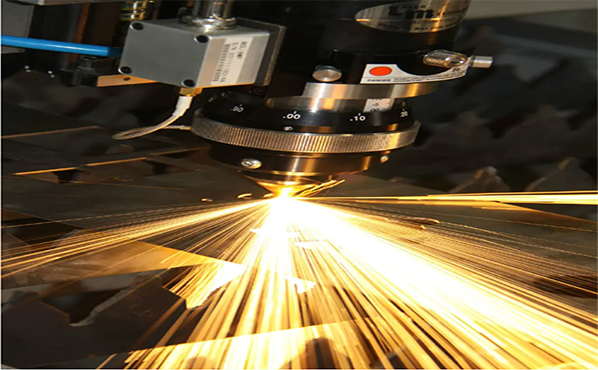Laser Cutting or Waterjet Cutting? A Guide to Choosing the Right Sheet Metal Fabrication Method+ View more
Laser Cutting or Waterjet Cutting? A Guide to Choosing the Right Sheet Metal Fabrication Method
+ View more
Date:2024-03-28 16:00
Sheet metal fabrication is a critical component of modern manufacturing. The cutting technology employed plays a significant role in determining the quality, cost, and efficiency of the produced items. The two mainstream cutting methods on the market today are laser cutting and waterjet cutting. Each technology has its strengths and limitations, and by comparing their technical parameters, application scope, and cost-effectiveness, we can make an informed choice for different processing needs.
Laser Cutting Technology
Laser cutting uses a high-power-density laser beam to irradiate the surface of a material, causing it to melt, vaporize, ablate quickly, or reach ignition temperature. At the same time, a high-speed airflow blows away the molten substance, thereby achieving the cut.
Technical Parameters
- Cutting Accuracy: Laser cutting accuracy can reach ±0.10mm.
- Cutting Speed: Depends on material thickness and laser power; for example, under a 2kW laser, steel plates with a thickness of <1mm can be cut at speeds up to 10m/min.
- Cuttable Materials: Most metals, including stainless steel, carbon steel, alloy steel, aluminum, and its alloys, as well as non-metal materials like wood, plastic, glass, ceramic, etc.
- Maximum Cutting Thickness: Depending on the laser power, this can range up to 20-25mm for carbon steel and 10-20mm for stainless steel.
Application Case
In 2019, a Chinese automotive parts manufacturer compared traditional stamping with laser cutting for producing car exhaust pipe covers. The results showed that laser cutting not only improved cutting precision and product consistency but also reduced production cycles by 15% and mold costs by approximately 70%.
Waterjet Cutting Technology
Waterjet cutting involves high-speed water flow generated by a high-pressure pump, which carries abrasives to erode and cut through materials. This method is suitable for cutting any hardness of material.
Technical Parameters
- Cutting Accuracy: Waterjet cutting accuracy ranges from ±0.10mm to ±0.35mm.
- Cutting Speed: Generally slower than laser cutting; for instance, cutting 3cm thick marble is about 2m/min.
- Cuttable Materials: In addition to various metals, waterjet cutting is particularly suitable for composites, stone, ceramics, glass, etc.
- Maximum Cutting Thickness: Almost unlimited, but the cutting speed significantly decreases as the material thickness increases.
Application Case
A Jiangsu aerospace equipment company in China used waterjet cutting to process composite material parts, successfully avoiding the problem of material property degradation due to heat-affected zones. Moreover, no secondary processing was required after cutting, saving both material and time costs significantly.
Cost-Benefit Analysis
The initial investment and operational costs of laser cutting equipment are generally higher than those of waterjet cutting. Laser cutting is suitable for mass production, offering high efficiency and economy for thin plate cutting; whereas waterjet cutting is more advantageous for small batch, diversified custom production, especially for thick plates or heat-sensitive materials processing.
Conclusion
Laser cutting and waterjet cutting each have their advantages. A comprehensive consideration of material type, thickness, budget, and desired cutting quality can lead to a wise choice:
- For metal thin plate materials, especially when high precision and large volumes are required, laser cutting is the preferred choice.
- For thick plate materials or materials sensitive to heat-affected zones, waterjet cutting is more appropriate.
Ultimately, when selecting a sheet metal fabrication method, all relevant factors should be thoroughly evaluated to ensure that both product quality requirements are met and cost-effectiveness is maximized.
Share to:
Recommend wonderful blog posts

